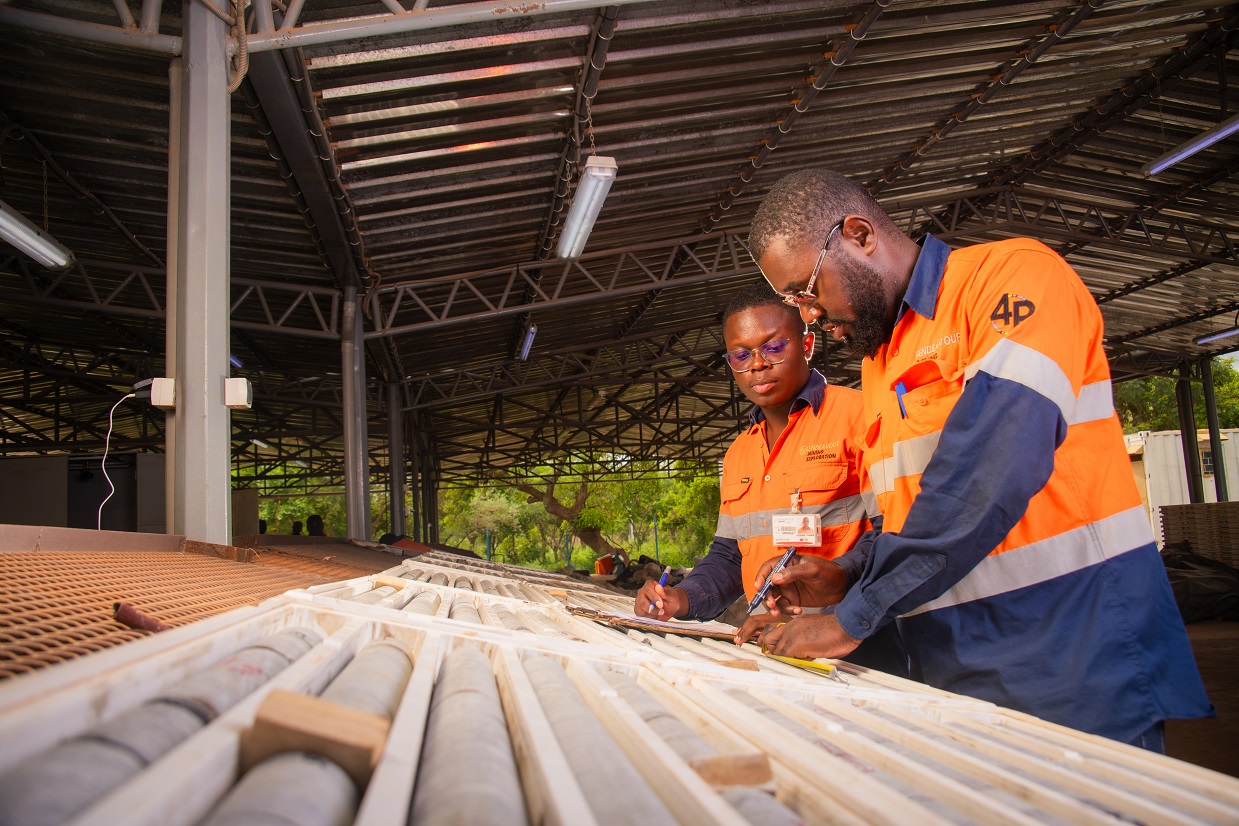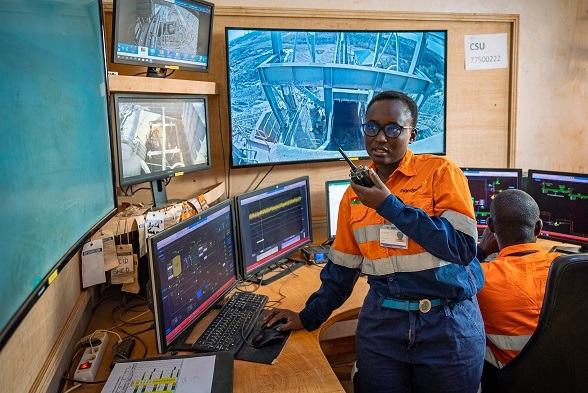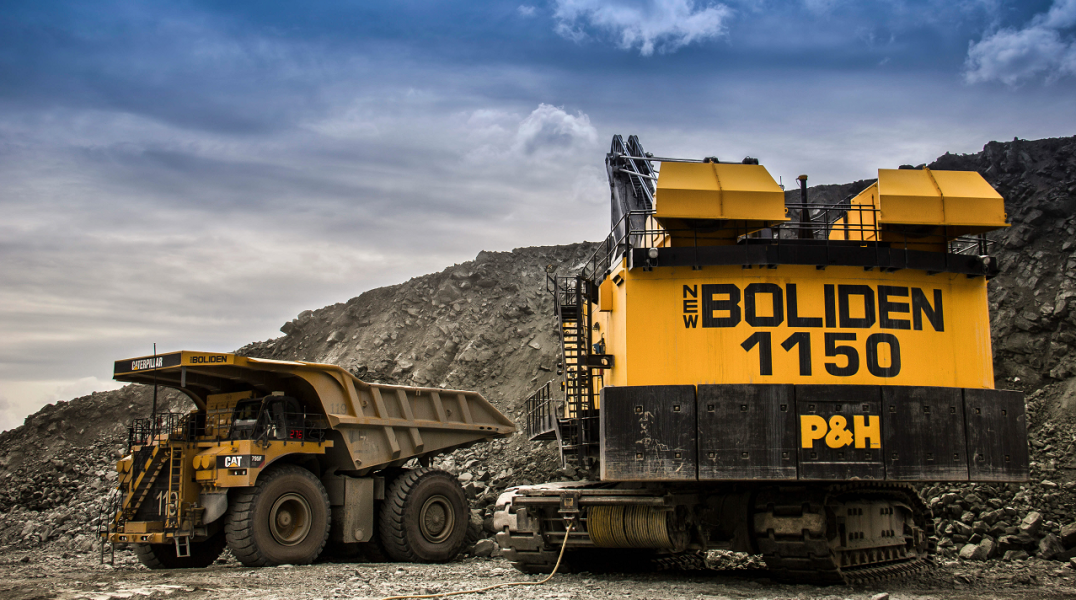
When we last spoke to Harry Anagnostaras-Adams, Managing Director of EMED Mining, it was late 2009 and he had been hoping to get the company’s flagship project, Rio Tinto open-pit copper mine near Seville in Spain into operation by 2010. That was at any rate the original objective of the company, which in 2005 had been floated on London’s AIM market by a group of Australian mining specialists who saw a real opportunity across Europe and the Middle East. EMED made its headquarters in Nicosia, capital of Cyprus, as a central location from which to oversee its activities in Spain and the Balkans. In 2008 it started trading its shares on the Toronto Stock Exchange as well.
In 2007 EMED was granted an option to acquire the mine known as Proyecto de Rio Tinto (PRT) formerly owned by, who else, Rio Tinto. In case there’s any confusion, the region of Spain where the mine sits is the original Rio Tinto, a town named after the river which flows close to it, which is coloured red - in Spanish tinto means red, as in vino tinto – thanks to all the mineral ores, such as iron and copper, in its waters. It is located 65 kilometres north-west of Seville, in the 230km-Iberian Pyrite Belt, which extends as far as the Atlantic coast of Portugal.
Mining has gone on here since 3,000 BC, so the last thing EMED would claim is a new discovery; nevertheless it took foresight and rigorous technical expertise to see the huge potential for modern exploration and extraction techniques here. The mine’s eponymous owner, now one of the largest mining companies in the world, had walked away from the site in the early 1990s, leaving it in the hands of private owners who mothballed it in 2000 due to low copper prices on the metal exchanges.
In recent years that has situation has been reversed. EMED acquired 100 percent ownership of the mine in 2008 when copper prices were down to $3,000 a tonne, however by June 2011 they had climbed to almost $8,000, a level they have maintained, and where they look likely to remain for a long time to come thanks to almost insatiable demand from China and India.
The prospects for the project are very attractive. It is, the company claims, the largest volcanogenic massive sulphide system in the world but no drilling had taken place there for a quarter of a century. Nevertheless the site has unrivalled facilities and infrastructure, with access to water and power, which means the capital cost of setting up, and the cost per pound of extraction are low. Financing is in place through Goldman Sachs, the London commodities hedge fund Red Kite and, linked to an offtake agreement, the Chinese smelter Xiangguang Copper.
The original estimate in 2007, while EMED owned just 51 percent of the project, was that it would need to invest $79 million to get the mine up and running. That was the equivalent of a total $240 million investment. In the event the latest estimate is that it will cost $252 million. “We have spent significantly more time and money to get to the execution stage,” said Harry Anagnostaras-Adams. “On the positive side, we have identified higher target values than initially assumed.”
Going forward the strategy will be not simply to take an old mine out of mothballs, though that alone has taken a considerable amount of work. The initial project is evaluated on a mine life of just 14 years, but he believes that it will continue to yield commercially for twice that length of time. In addition, work in the past by RTZ has indicated that there are other deposits on the site, and these will be tested by EMED. It will also re-evaluate the underground mines, optimise and extend the existing reserves, and look at any potential there might be to re-process the tailings from pervious mining activities.
Once the Rio Tinto mine is in full production during the third quarter of 2013, subject to obtaining the necessary environmental and other permits it will employ around 450 people. The permitting process should not be a problem: the Spanish government is stimulated to get behind any project that will provide employment and generate wealth at a time when both are in conspicuously short supply. Annual production is estimated at 37,000 tonnes of copper in concentrate, based on processing nine million tonnes of ore per year, though Anagnostaras-Adams is talking of ramping up to the full available capacity of 15,000 tpa at an earlier stage than originally planned. As we reported in 2009 the site holds one million tonnes of copper resources and 600,000 tonnes of copper reserves, equating to contained metal worth around $4 billion.
As then, the company’s other projects are waiting for Rio Tinto to release the cash flow and resources to develop them. EMED’s 1,000 square kilometre Detva licence area in Slovakia was ‘virgin’ discovery by EMED in 2006. During 2008 the company completed a diamond drilling program of 34 holes on a 100 metre by 100 metre grid pattern at Biely Vrch, finding extensive gold mineralisation. A scoping study in 2010 indicated that that the Biely Vrch deposit would be commercially viable, capable of producing 60,000 ounces of gold a year over at least ten years.
EMED Mining also has a number of other interests, among them a large mining lease in Georgia and a 30 percent share in exploration company KEFI Minerals, which is active in Turkey and Saudi Arabia. KEFI Minerals also owns an extensive database of exploration data that provides a continuous pipeline of further exploration prospects.
There is no denying that, like every industry, mining and exploration has suffered since the onset of the global downturn, but Anagnostaras-Adams remains optimistic. “I think the industry’s one of the few bright spots in the global economy,” he says. And if anyone is wondering about the effect of the proposed EU-instigated raid on assets that is troubling Cyprus at the moment, don’t worry too much – it is unlikely to be liable for more than €20,000.
Written by John O'hanlon
Research by Robbie Hodgson
DOWNLOAD
 EMED-Europe.Mining-Apr13-Bro-s.pdf
EMED-Europe.Mining-Apr13-Bro-s.pdf













